第53届威尼斯双年展终生成就奖约翰•巴尔代萨里
John Baldessari 约翰•巴尔代萨里
今年的威尼斯双年展,小野洋子和约翰-巴尔代萨里将被授予该双年展的终生成就奖——金狮奖。”终生成就奖的颁奖仪式将于6月6日,也就是双年展开幕那天举行。
威尼斯双年展的策展人Daniel Birnbaum说:“小野洋子和巴尔代萨里作为杰出的艺术家,他们开创性的行为打开了通向诗歌,观念,和这个社会可能性的一道门。对于我们生活在其中的这个世界,他们呈现出的东西启发了我们对艺术和这个世界之间关系的更深理解。”
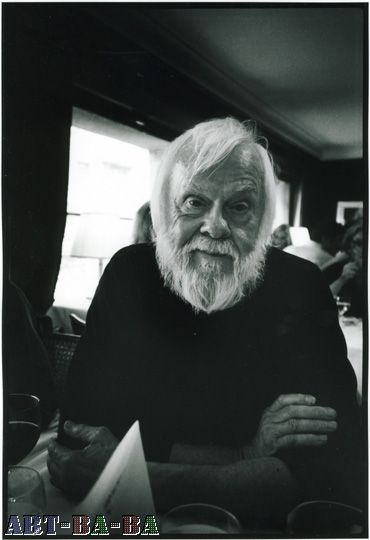
John Baldessari
美国观念艺术家, 出生于1931
"我真正感兴趣的是人们从一点一滴的信息中所获得的观念的飞跃以及他们如何填补这些空间."
——约翰•巴尔代萨里
“如果我发现我喜欢的艺术环绕着我,我就不做艺术了。”
——约翰•巴尔代萨里
点击查看艺术家简历
早期的文字绘画
Baldessari的早期主要作品是空洞的帆布油画,但这是来源于当代艺术理论绘画宣言。在早期尝试中,Baldessari 在上了浓重涂料的绘画表面上手绘这样的句子:“假设这是真的?然后呢?”。然而,绘画的结果对作者本人来说却是无比失望的、因为他所采用的绘画形式和方法与他希望表现的语言客观性是相矛盾的。Baldessari决定不再直接参与到绘画创作中去,反之,他采用了一种商业的、无生命的风格,这样,他的文字就能够在不受干扰的情况下引起观众的注意了。画布上的文字是广告牌工人以毫无装饰风格的黑体字写上去的。这个系列的第一副作品表现了讽刺的宣言:“表达不清的二维表面是死亡的体验”(1967年)。
而在另一件作品《Painting for Kubler》(1967-1968年)中,Baldessari为他的观众给出了理论上的指导——如何欣赏他的作品,以及为什么在承上启下的基础上,这类作品有继续发展的重要性。如此似是而非的艺术理念是Baldessari刻意为之,但却在自我指向的表现方式下显得空洞和愚蠢。
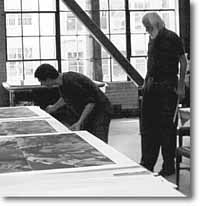
巴尔代萨里在其美国的洛杉矶的工作室内
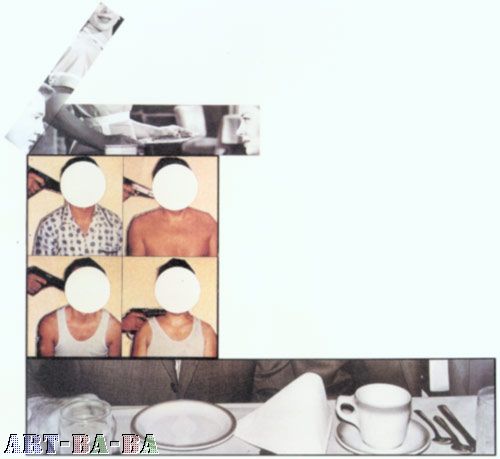
四个男人被人用枪顶住脑袋拷问,他们的脸被白色盘子遮住,似乎是为了保护或是忽略他们的身分。在他们的上下是一个普通的咖啡厅的内景,平静祥和的场面多少消减和麻醉了暴力场面的紧张气氛。餐桌上的盘子与四个男人脸上的盘子彼此呼应。这是典型的巴尔代萨里的风格。他经常找来一些图片,将它们并置在一起,以此观察和研究我们对照片和电视影像的理解。巴尔代萨里是一个既幽默又勤学好问的艺术家,他用大众文化的语言对艺术概念提出疑问。他说:“我希望能表现出我心中的艺术。” 巴尔代萨里曾经举行过一个仪式,将他于1953年至1966年创作的绘画作品全部付之一炬。
文字绘画和图像的并置
和他的早期文字绘画相关联的是他的《Wrong(错误)》系列。该系列以摄影图像配合一系列来自于写作书籍的文字。在摄影作品《California Map Project》中,他在这张印刷的加利福尼亚局部地图上,发现了类似于英文字母“California”的自然地理形态。而在《Binary Code Series(二进制系列)》中,Baldessari通过把摄影作品设置为交替出现,作为二进制码的开关,来把图像作为信息的承载者进行运用。在一个例子中,有这样两张图片交替出现:一张是一位女性手执香烟放在她嘴边,而另一张则是香烟慢慢消失。
另一组系列作品中,Baldessari将物品的图片,例如一只玻璃杯或是一块木头,和“一只玻璃杯是一只玻璃杯”或“木头是木头”之类的语句并置在一起,此外、还有“但是香烟是个好的假象”的语句和艺术家正抽着烟的图片的并置。这些作品都直接指向雷尼·马格利特(译者注:René Magritte,1898-1967,比利时画家,其超现实主义作品往往从意想不到的或令人难以置信的角度来描述普通事物)的《The Treachery of Images(图像的背叛)》;图像也同样用于替代想要描绘的物件。然而,这个系列同样显而易见地指向西格蒙德·佛洛依德(译者注:Freud,1856-1939,奥地利神经学家、精神病医学家、精神分析的创始人)著名的属性观察,即“有时、香烟它就只是一支香烟”。除此之外、也指向卢迪亚·吉卜林(译者注:英国作家,1865-1936,1907年获诺贝尔文学奖)的“女性只是女性,但是一支好烟是个假象。”
武断的游戏
Baldessari表达出这样一个思想,即:他对于语言的兴趣来源于其与游戏结构的相似性,因为两者都在一种武断的和命令式的规则下运行。从这个层面上讲,他的许多作品都是一个系列的,表现了希望达到一种武断目的的企图,例如《Throwing 4 Balls in the Air to Get a Square(将四个球抛向空中以得到一个方块)》。在这件作品中,作者真的像这个标题写的那样做了。他把这些结果拍摄下来,并且最终从“36次尝试中选出最好的一次”。至于为什么是36次,那仅仅是因为这是一卷35毫米胶片的标准可拍摄张数。
指向
Baldessari的许多作品都包含了指向的因素。他不仅告诉他的观众们可看些什么,还告诉他们如何做出选择并比较,有时,仅仅是为了那样做而那样做罢了。在他的录像作品《How We Do Art Now(如今我们如何做艺术)》题为《Examining Three 8d Nails(检查3枚8分米的钉子)》的片段中,Baldessari批评了形式主义对于艺术的估价。片段里的他对那些钉子的每一寸细节都着迷不已:他观察它们,例如钉子上有多少铁锈,或是描述性的细节,例如,哪一枚显得“更冷一点、更长一点、更次要一点”。
在读了一篇对于概念艺术的批判文章后,Baldessari在《Commissioned Paintings》系列里采用了“指向”这个词的字面意义。那篇批判文章里说,没有什么能够比的上指向了。而这个作品的开头是若干“一只手指向各个物体”的照片,接下来,Baldessari雇佣业余艺术家甚至是在技术上十分纯熟的专业艺术家来画这些图片。最后,他为每张完成的画作加上一个标题——《一张由(艺术家的名字)所画的作品》。在这个例子里,他就像是个编舞者一样:指挥一系列动作,但不直接参与其中。因此,这些画作就往往被理解为是对于艺术著作权的疑问。在这个系列里,业余艺术家就类似于广告牌工人一样,因为他们只是呆板地画着,而不理会到底画了些什么。
“In his activities both as an art teacher and as an internationally renowned artist,” wrote Eleanor Heartney in Art in America in 2005, “John Baldessari has long been recognized as one of the progenitors of postmodern art.” Baldessari was born in National City, just south of San Diego, California in 1931. After earning both a BA and an MA from San Diego State College, he was living a quiet life in National City in the 1950’s , raising his family and teaching. He has said that before he was thirty he thought of art as “vacation, not vocation.” That initially casual attitude gave him the freedom to make art whatever he wanted it to be, and he wound up changing how the world thinks about art. He hired a sign painter to print signs that told people how to evaluate pictures. He thought that more people are used to looking at magazines and newspapers than paintings, so he decided to begin working with texts and photographs to make art more accessible to people. He was looking for what he called “more of a common language.”
In a 1993 interview, Baldessari told Constance Lewallen, “You can always read every piece I do in terms of grappling with order and disorder, colliding one against the other. Order is not the order we think it is. There’s always something about to erupt, like the L.A. riots.”
Baldessari’s work is collage based. He places images in cut-out shapes, or removes images and puts others in their places. His unique formal logic to slows down the flood of photographic images we experience each day. David Pagel in The New York Times wrote, “Unlike most types of collage, Baldessari’s does not function by overlapping fragments or forcing things together to create an overarching narrative. In his art, everything occupies its own space.”
Teaching has always been important to Baldessari. He taught at Cal Arts from its founding in 1970 to 1988 and has taught at the University of California, Los Angeles since 1996. One of his famous early pieces involved students, who were directed to copy and re-copy the title “I Will Not Make Any More Boring Art.”(1971) Baldessari’s wry pedagogic style has earned him the title, “The World’s Tallest Leprechaun.” Baldessari is often credited with helping to make Los Angeles an internationally recognized center of contemporary art, as well as a place where artists choose to continue teaching even after their careers would have allowed them to quit.
A lifelong interest in Goya’s aquatints led to the important print project “Ich Habe es Gesehen/I Saw It – Baldessari and Goya,” published by Graphische Sammlung in 1997. He has published prints with Crown Point Press, Gemini GEL, and Brooke Alexander Editions.
Baldessari showed in New York at Sonnabend Gallery for many years and joined Marian Goodman Gallery in 1997. He has participated in the Whitney Biennial four times, as well as the 1997 Venice Biennale. He has been the subject of numerous retrospective museum exhibitions, which he describes as “like falling off a 20 story building, watching your whole life pass in front of you,” including, The New Museum in New York, Centre Pompidou in Paris, and the Museum of Contemporary Art San Diego. His work is held in many public collections including the Museum of Modern Art in New York, the San Francisco Museum of Modern Art, the Smithsonian Museum in Washington, D.C., the Tate Collection, London, and the Pompidou Center in Paris, France.
John Baldessari is represented by Marian Goodman Gallery in New York City. He lives and works in Santa Monica, California.
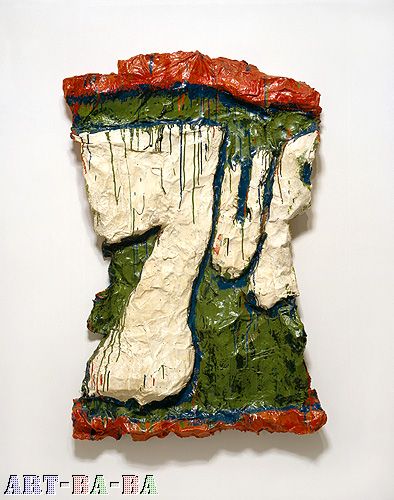
Claes Oldenburg, 7-up,1961,from Ways of seeing
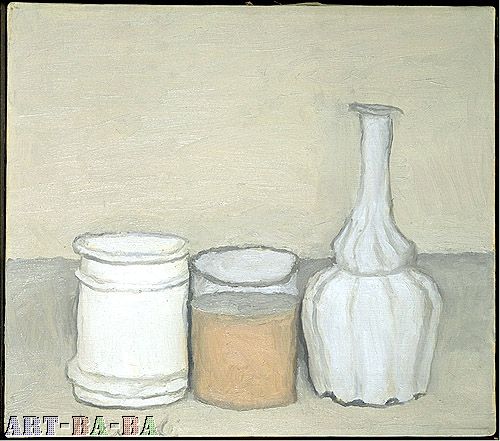
Giorgio Morandi, Still Life With Flask,1953, from Ways of Seeing, curated by John Baldessari
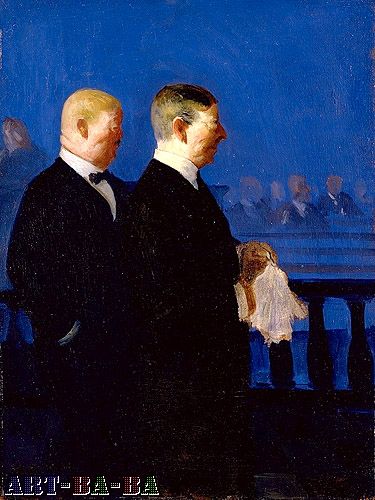
Guy Pene Du Bois,The Lawyers,1919 from Ways of Seeing
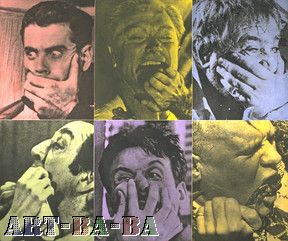
Six Colorful Gags (Male), 1991
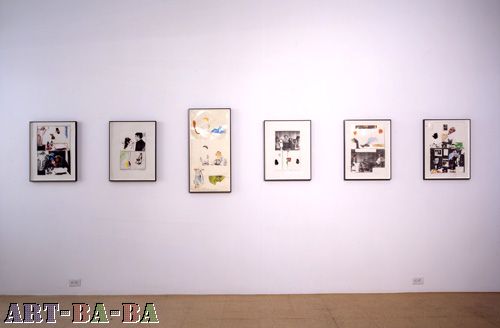
installation view,2006
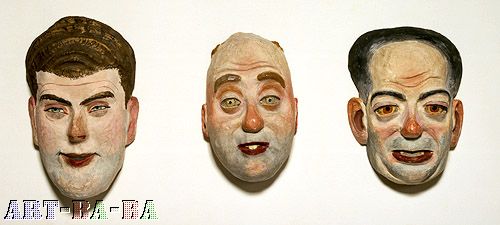
Jean Dubuffet,Three Masks,Rene Pontier, Andre Claude, Robert Polguere,1935,from Ways of Seeing
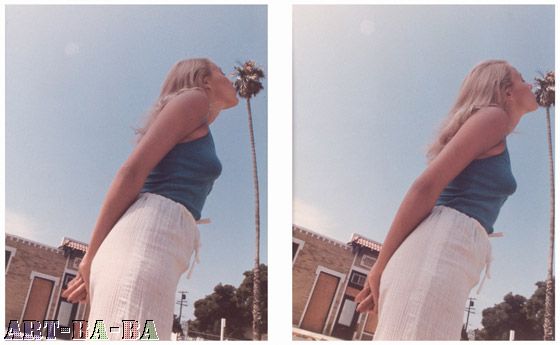
John Baldessari(约翰·巴尔代萨里)作品:Kissing Series Simone, Palm Trees (Near)
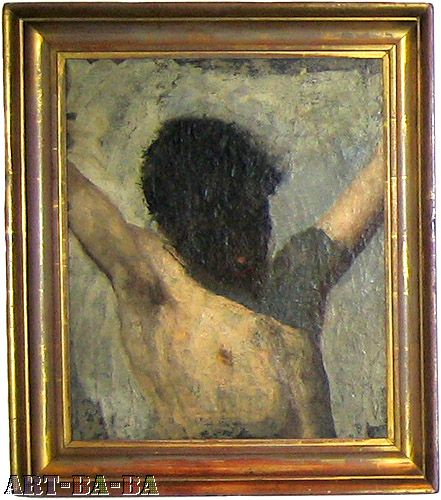
Thomas Eakins,Study for the Crucifixion,1880,from Ways of Seeing
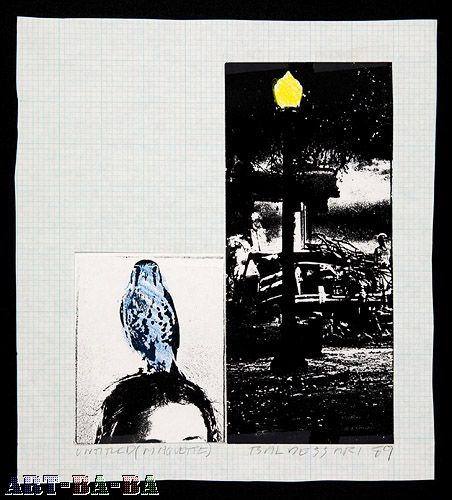
Untitled (Maquette).1989, at 1301PE Gallery
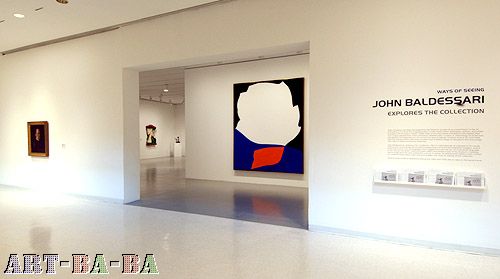
Ways of Seeing, John Baldessari Explores the Collection,2007,installation view at the Hirshhorn Museum and Sculpture Garden(Washington, D. C)
翻译/小俞
今年的威尼斯双年展,小野洋子和约翰-巴尔代萨里将被授予该双年展的终生成就奖——金狮奖。”终生成就奖的颁奖仪式将于6月6日,也就是双年展开幕那天举行。
威尼斯双年展的策展人Daniel Birnbaum说:“小野洋子和巴尔代萨里作为杰出的艺术家,他们开创性的行为打开了通向诗歌,观念,和这个社会可能性的一道门。对于我们生活在其中的这个世界,他们呈现出的东西启发了我们对艺术和这个世界之间关系的更深理解。”

John Baldessari
美国观念艺术家, 出生于1931
"我真正感兴趣的是人们从一点一滴的信息中所获得的观念的飞跃以及他们如何填补这些空间."
——约翰•巴尔代萨里
“如果我发现我喜欢的艺术环绕着我,我就不做艺术了。”
——约翰•巴尔代萨里
点击查看艺术家简历
早期的文字绘画
Baldessari的早期主要作品是空洞的帆布油画,但这是来源于当代艺术理论绘画宣言。在早期尝试中,Baldessari 在上了浓重涂料的绘画表面上手绘这样的句子:“假设这是真的?然后呢?”。然而,绘画的结果对作者本人来说却是无比失望的、因为他所采用的绘画形式和方法与他希望表现的语言客观性是相矛盾的。Baldessari决定不再直接参与到绘画创作中去,反之,他采用了一种商业的、无生命的风格,这样,他的文字就能够在不受干扰的情况下引起观众的注意了。画布上的文字是广告牌工人以毫无装饰风格的黑体字写上去的。这个系列的第一副作品表现了讽刺的宣言:“表达不清的二维表面是死亡的体验”(1967年)。
而在另一件作品《Painting for Kubler》(1967-1968年)中,Baldessari为他的观众给出了理论上的指导——如何欣赏他的作品,以及为什么在承上启下的基础上,这类作品有继续发展的重要性。如此似是而非的艺术理念是Baldessari刻意为之,但却在自我指向的表现方式下显得空洞和愚蠢。

巴尔代萨里在其美国的洛杉矶的工作室内

四个男人被人用枪顶住脑袋拷问,他们的脸被白色盘子遮住,似乎是为了保护或是忽略他们的身分。在他们的上下是一个普通的咖啡厅的内景,平静祥和的场面多少消减和麻醉了暴力场面的紧张气氛。餐桌上的盘子与四个男人脸上的盘子彼此呼应。这是典型的巴尔代萨里的风格。他经常找来一些图片,将它们并置在一起,以此观察和研究我们对照片和电视影像的理解。巴尔代萨里是一个既幽默又勤学好问的艺术家,他用大众文化的语言对艺术概念提出疑问。他说:“我希望能表现出我心中的艺术。” 巴尔代萨里曾经举行过一个仪式,将他于1953年至1966年创作的绘画作品全部付之一炬。
文字绘画和图像的并置
和他的早期文字绘画相关联的是他的《Wrong(错误)》系列。该系列以摄影图像配合一系列来自于写作书籍的文字。在摄影作品《California Map Project》中,他在这张印刷的加利福尼亚局部地图上,发现了类似于英文字母“California”的自然地理形态。而在《Binary Code Series(二进制系列)》中,Baldessari通过把摄影作品设置为交替出现,作为二进制码的开关,来把图像作为信息的承载者进行运用。在一个例子中,有这样两张图片交替出现:一张是一位女性手执香烟放在她嘴边,而另一张则是香烟慢慢消失。
另一组系列作品中,Baldessari将物品的图片,例如一只玻璃杯或是一块木头,和“一只玻璃杯是一只玻璃杯”或“木头是木头”之类的语句并置在一起,此外、还有“但是香烟是个好的假象”的语句和艺术家正抽着烟的图片的并置。这些作品都直接指向雷尼·马格利特(译者注:René Magritte,1898-1967,比利时画家,其超现实主义作品往往从意想不到的或令人难以置信的角度来描述普通事物)的《The Treachery of Images(图像的背叛)》;图像也同样用于替代想要描绘的物件。然而,这个系列同样显而易见地指向西格蒙德·佛洛依德(译者注:Freud,1856-1939,奥地利神经学家、精神病医学家、精神分析的创始人)著名的属性观察,即“有时、香烟它就只是一支香烟”。除此之外、也指向卢迪亚·吉卜林(译者注:英国作家,1865-1936,1907年获诺贝尔文学奖)的“女性只是女性,但是一支好烟是个假象。”
武断的游戏
Baldessari表达出这样一个思想,即:他对于语言的兴趣来源于其与游戏结构的相似性,因为两者都在一种武断的和命令式的规则下运行。从这个层面上讲,他的许多作品都是一个系列的,表现了希望达到一种武断目的的企图,例如《Throwing 4 Balls in the Air to Get a Square(将四个球抛向空中以得到一个方块)》。在这件作品中,作者真的像这个标题写的那样做了。他把这些结果拍摄下来,并且最终从“36次尝试中选出最好的一次”。至于为什么是36次,那仅仅是因为这是一卷35毫米胶片的标准可拍摄张数。
指向
Baldessari的许多作品都包含了指向的因素。他不仅告诉他的观众们可看些什么,还告诉他们如何做出选择并比较,有时,仅仅是为了那样做而那样做罢了。在他的录像作品《How We Do Art Now(如今我们如何做艺术)》题为《Examining Three 8d Nails(检查3枚8分米的钉子)》的片段中,Baldessari批评了形式主义对于艺术的估价。片段里的他对那些钉子的每一寸细节都着迷不已:他观察它们,例如钉子上有多少铁锈,或是描述性的细节,例如,哪一枚显得“更冷一点、更长一点、更次要一点”。
在读了一篇对于概念艺术的批判文章后,Baldessari在《Commissioned Paintings》系列里采用了“指向”这个词的字面意义。那篇批判文章里说,没有什么能够比的上指向了。而这个作品的开头是若干“一只手指向各个物体”的照片,接下来,Baldessari雇佣业余艺术家甚至是在技术上十分纯熟的专业艺术家来画这些图片。最后,他为每张完成的画作加上一个标题——《一张由(艺术家的名字)所画的作品》。在这个例子里,他就像是个编舞者一样:指挥一系列动作,但不直接参与其中。因此,这些画作就往往被理解为是对于艺术著作权的疑问。在这个系列里,业余艺术家就类似于广告牌工人一样,因为他们只是呆板地画着,而不理会到底画了些什么。
“In his activities both as an art teacher and as an internationally renowned artist,” wrote Eleanor Heartney in Art in America in 2005, “John Baldessari has long been recognized as one of the progenitors of postmodern art.” Baldessari was born in National City, just south of San Diego, California in 1931. After earning both a BA and an MA from San Diego State College, he was living a quiet life in National City in the 1950’s , raising his family and teaching. He has said that before he was thirty he thought of art as “vacation, not vocation.” That initially casual attitude gave him the freedom to make art whatever he wanted it to be, and he wound up changing how the world thinks about art. He hired a sign painter to print signs that told people how to evaluate pictures. He thought that more people are used to looking at magazines and newspapers than paintings, so he decided to begin working with texts and photographs to make art more accessible to people. He was looking for what he called “more of a common language.”
In a 1993 interview, Baldessari told Constance Lewallen, “You can always read every piece I do in terms of grappling with order and disorder, colliding one against the other. Order is not the order we think it is. There’s always something about to erupt, like the L.A. riots.”
Baldessari’s work is collage based. He places images in cut-out shapes, or removes images and puts others in their places. His unique formal logic to slows down the flood of photographic images we experience each day. David Pagel in The New York Times wrote, “Unlike most types of collage, Baldessari’s does not function by overlapping fragments or forcing things together to create an overarching narrative. In his art, everything occupies its own space.”
Teaching has always been important to Baldessari. He taught at Cal Arts from its founding in 1970 to 1988 and has taught at the University of California, Los Angeles since 1996. One of his famous early pieces involved students, who were directed to copy and re-copy the title “I Will Not Make Any More Boring Art.”(1971) Baldessari’s wry pedagogic style has earned him the title, “The World’s Tallest Leprechaun.” Baldessari is often credited with helping to make Los Angeles an internationally recognized center of contemporary art, as well as a place where artists choose to continue teaching even after their careers would have allowed them to quit.
A lifelong interest in Goya’s aquatints led to the important print project “Ich Habe es Gesehen/I Saw It – Baldessari and Goya,” published by Graphische Sammlung in 1997. He has published prints with Crown Point Press, Gemini GEL, and Brooke Alexander Editions.
Baldessari showed in New York at Sonnabend Gallery for many years and joined Marian Goodman Gallery in 1997. He has participated in the Whitney Biennial four times, as well as the 1997 Venice Biennale. He has been the subject of numerous retrospective museum exhibitions, which he describes as “like falling off a 20 story building, watching your whole life pass in front of you,” including, The New Museum in New York, Centre Pompidou in Paris, and the Museum of Contemporary Art San Diego. His work is held in many public collections including the Museum of Modern Art in New York, the San Francisco Museum of Modern Art, the Smithsonian Museum in Washington, D.C., the Tate Collection, London, and the Pompidou Center in Paris, France.
John Baldessari is represented by Marian Goodman Gallery in New York City. He lives and works in Santa Monica, California.

Claes Oldenburg, 7-up,1961,from Ways of seeing

Giorgio Morandi, Still Life With Flask,1953, from Ways of Seeing, curated by John Baldessari

Guy Pene Du Bois,The Lawyers,1919 from Ways of Seeing

Six Colorful Gags (Male), 1991

installation view,2006

Jean Dubuffet,Three Masks,Rene Pontier, Andre Claude, Robert Polguere,1935,from Ways of Seeing

John Baldessari(约翰·巴尔代萨里)作品:Kissing Series Simone, Palm Trees (Near)

Thomas Eakins,Study for the Crucifixion,1880,from Ways of Seeing

Untitled (Maquette).1989, at 1301PE Gallery

Ways of Seeing, John Baldessari Explores the Collection,2007,installation view at the Hirshhorn Museum and Sculpture Garden(Washington, D. C)
翻译/小俞